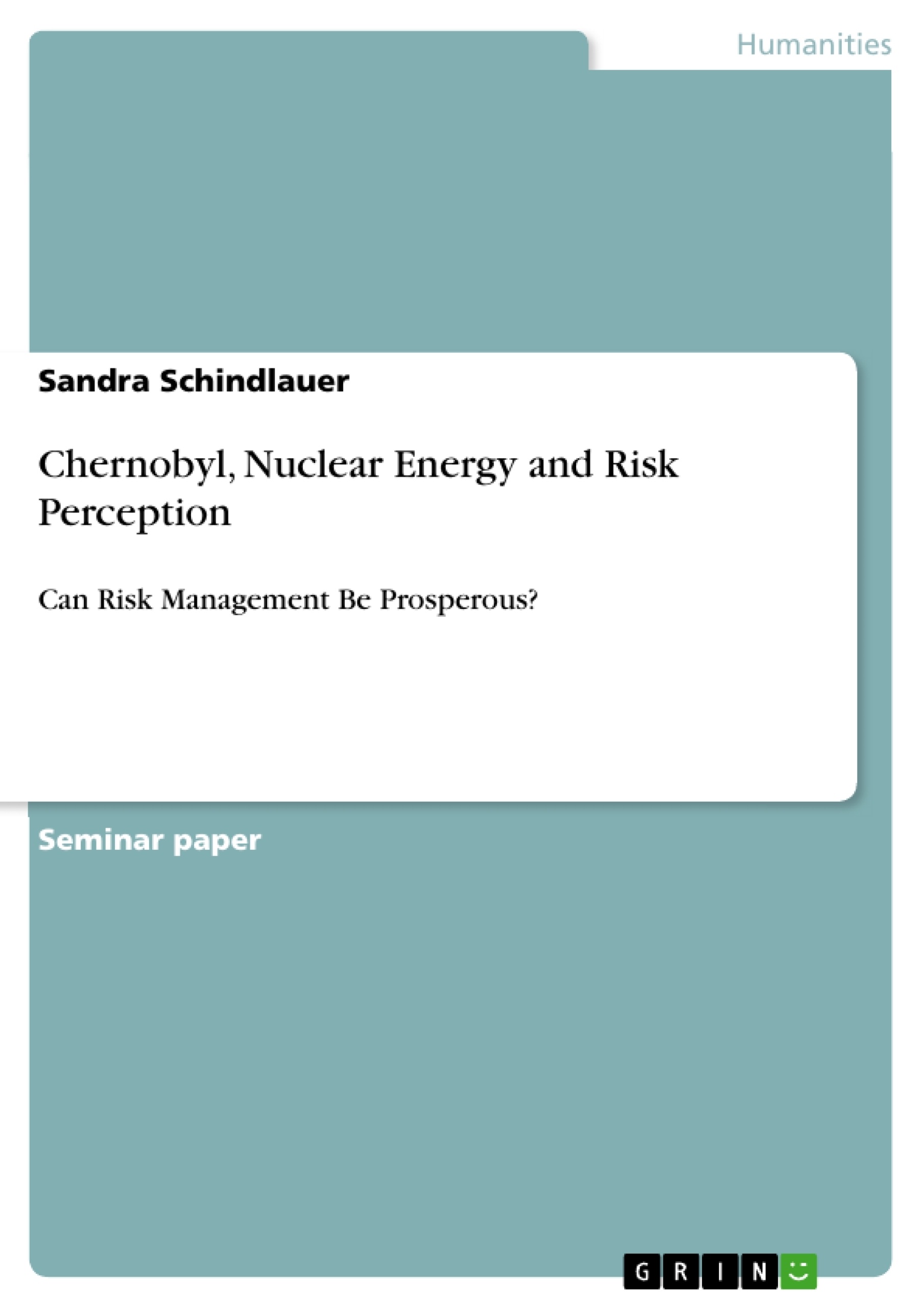The present essay deals with the issue of the danger and Risk Perception of nuclear energy in connection with the nuclear accident in Chernobyl in the year 1986. Under the central question: can Risk Management be successful concerning the reduction of the people´s Risk Perception of nuclear energy and nuclear accidents? it was attempted to find a first answer based on the analysis of newspaper articles and books. Thereby the role of the media and the psychology of the people is kept in mind.
Although the accident in Chernobyl happened already 22 years ago, it left a lasting mark on the people´s perception of the safety of nuclear energy and nuclear power in general.
The problems arising in the context of managing these risks are highlighted as well as the question whether and how these problems, if applicable, can be solved.
Although the people are aware of the risk and the danger in which they resort themselves, some people decide to choose the contaminated zone around Chernobyl as a tourist destination. This seems especially paradox, because of the fact that those people settle for a risk they would actually be afraid of in everyday life. There are various explanations for this behavior called "Dark Tourism". The examination of this phenomenon will conclude the paper.
Inhaltsverzeichnis (Table of Contents)
- Introduction
- Chapter 1: Causes and Background to the Accident in Chernobyl
- 1.1 The RBMK-1000 Reactor
- 1.2 The Accident in Chernobyl
- Chapter 2: Risk Perception, Risk Management and Chernobyl
- 2.1 The Accidents' Influence on Risk Perception
- 2.2 The Role of the Media
- 2.3 Risk Management Problems
- Chapter 3: Chernobyl as Holiday Destination
- 3.1 Conscious Risk as Thrill - Chernobyl and Dark Tourism
- 3.2 Daytrip to the Restricted Area
- Conclusion: A Solution Statement?
Zielsetzung und Themenschwerpunkte (Objectives and Key Themes)
This essay examines the danger and risk perception of nuclear energy, specifically in relation to the Chernobyl disaster of 1986. The central question is whether Risk Management can effectively reduce the public's risk perception of nuclear energy and accidents. The essay analyzes newspaper articles and books to find a preliminary answer, considering the role of the media and the psychology of risk perception.
- The causes and background of the Chernobyl accident
- The influence of the accident on public risk perception of nuclear energy
- The role of the media in shaping risk perception
- Problems in risk management related to nuclear energy
- The paradox of Chernobyl tourism, where individuals willingly accept risks they would fear in daily life
Zusammenfassung der Kapitel (Chapter Summaries)
- Chapter 1 explores the causes and background of the Chernobyl disaster, focusing on the faulty design of the RBMK-1000 reactor, particularly its lack of containment and positive void coefficient. The chapter also examines the Soviet authorities' delayed information policy and the "lack of safety culture" within the Soviet Union.
- Chapter 2 investigates the lasting impact of the Chernobyl accident on public risk perception of nuclear energy. It highlights the role of the media in shaping public understanding and the challenges in managing risks related to nuclear energy.
- Chapter 3 delves into the phenomenon of Chernobyl tourism. The chapter explores the motivations behind choosing a contaminated area as a tourist destination, emphasizing the contrasting nature of risk perception between daily life and a specific, consciously accepted risk.
Schlüsselwörter (Keywords)
The core concepts explored in this essay include Chernobyl, risk perception, media, risk management, nuclear accidents, and dark tourism. The focus is on understanding the complexities of public perception towards nuclear energy and the challenges of managing risk in this context.
- Quote paper
- Sandra Schindlauer (Author), 2008, Chernobyl, Nuclear Energy and Risk Perception, Munich, GRIN Verlag, https://www.grin.com/document/174367



